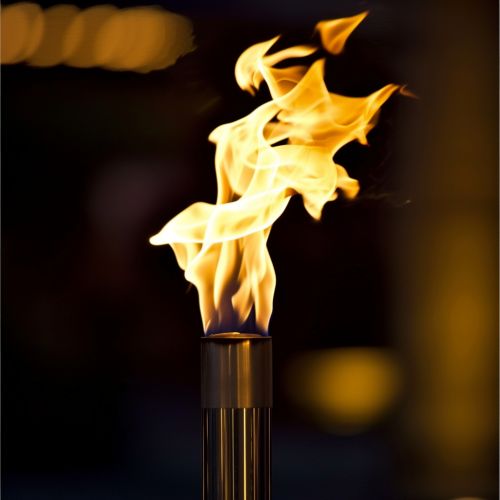Olympic Flame
Origins and History
The Olympic Flame is a symbol of the Olympic Games, tracing its origins back to ancient Greece. Fire was considered a divine element in ancient Greek mythology, with Prometheus stealing fire from the gods and giving it to humans. During the ancient Olympic Games, which took place in Olympia, a flame was ignited by the sun and then kept burning until the close of the games. The fire was reintroduced at the 1928 Summer Olympics in Amsterdam and it has been part of the modern Olympic Games ever since.

The tradition of the Olympic Torch relay, where the flame is transported from Greece to the various designated Olympic sites, began in the Berlin Games in 1936. The relay symbolizes the passing of Olympic traditions from one generation to the next. The flame is lit at the ancient site of Olympia by women performing as priestesses. They use a parabolic mirror to focus the rays of the Sun, achieving a flame which is then kept burning until the end of the Games.
Symbolism
The Olympic Flame symbolizes several things. Primarily, it represents purity, the endeavor for perfection and the struggle for victory. It also represents peace and unity, as the flame is passed from one person to another during the torch relay, symbolizing the passing of peaceful competition from one nation to another. The flame's journey from Greece to the Olympic venue symbolizes the bringing together of all nations in peace to compete in the spirit of camaraderie and sportsmanship.
The Torch Relay
The Olympic Torch relay takes place over several months leading up to the opening ceremony of the Olympic Games. The flame is passed from one torchbearer to another, each of whom runs or walks a short distance. The route of the relay varies from one Games to another, but it usually includes landmarks and sites of significance to the host nation. The final torchbearer, often a well-known and successful athlete from the host nation, lights the Olympic cauldron at the opening ceremony. This marks the official start of the Games.
The Olympic Cauldron
The Olympic Cauldron is a large structure that is a central part of the opening and closing ceremonies of the Olympic Games. The design of the cauldron, as well as how it is lit and how it burns, is left to the host city's organizing committee. The cauldron is lit by the final torchbearer, and it remains lit for the duration of the Games. At the end of the Games, during the closing ceremony, the flame is extinguished in a formal and ceremonial manner.
Controversies and Issues
While the Olympic Flame and the Torch Relay are intended to symbolize peace and unity, they have not been without controversy. The torch relay, in particular, has been the target of protests and political activism. For example, the relay for the 2008 Beijing Olympics was met with significant protests over China's human rights record. In some cases, the route of the relay has been altered, or the relay has been cancelled altogether, to avoid such issues.
